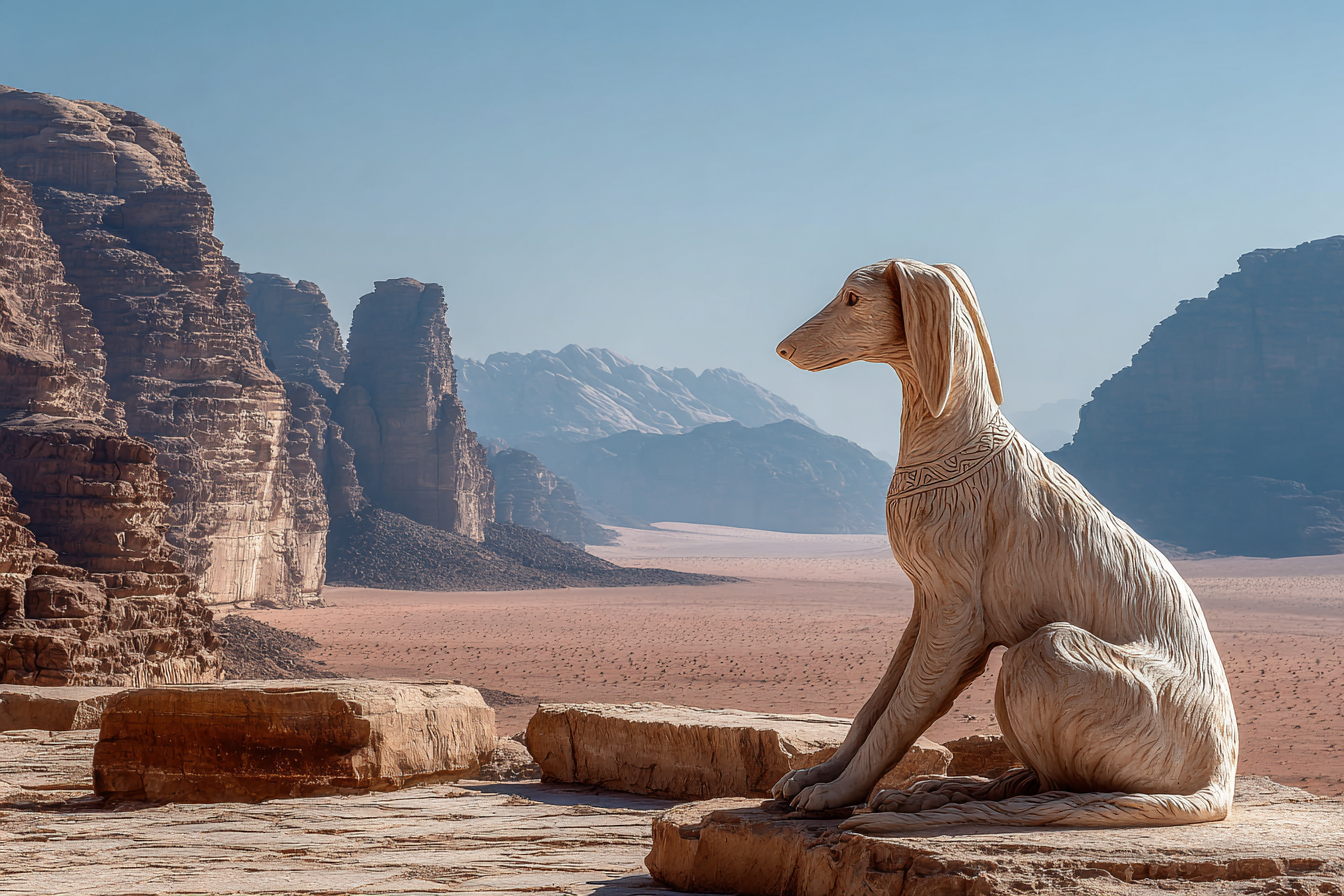The Saluki is more than just a beautiful and elegant dog breed; it is a living link to ancient history, royalty, and the noble art of hunting. Often referred to as the “Royal Dog of Egypt,” the Saluki has captivated the hearts of civilizations for thousands of years. This graceful sighthound has played a significant role in Middle Eastern societies and has become a symbol of nobility and endurance. Join us as we trace the fascinating history of the Saluki dog, exploring its origins, cultural importance, artistic depictions, global journey, and position in the modern world.
Origins and Ancient Roots
The Saluki’s story begins over 4,000 years ago, making it one of the oldest known dog breeds in the world. Archaeological findings reveal that dogs bearing a striking resemblance to the Saluki were revered in the ancient Middle East long before many modern breeds emerged. The breed likely developed in desert regions across what is now Iran, Iraq, Egypt, and the Arabian Peninsula, where their speed, agility, and endurance made them perfectly suited for hunting in harsh desert terrains.
Genetic studies suggest that the Saluki is closely related to other ancient sighthounds, yet it maintains unique physical characteristics that speak to its adaptation to desert life. Unlike many modern dog breeds, the Saluki has remained relatively unchanged, preserving traits that humanity valued in early hunting companions, such as keen eyesight, a slender build, and deep chest for lung capacity.
Saluki’s Role in Middle Eastern Societies
In Middle Eastern cultures, the Saluki was highly esteemed for its hunting prowess. Bedouin tribes, nomadic communities famous for their deep connection with the desert, prized the Saluki not only as a hunting companion but also as a cherished member of the family. These dogs were primarily used to hunt gazelles, hares, and other fleet-footed game, relying on their remarkable speed and stamina rather than brute strength.
The relationship between the Saluki and the Bedouins was deeply symbiotic. Hunters would care for their dogs with great attention, providing them with the best food and shelter. In return, the Saluki played an essential role in sustaining the tribe’s way of life by helping procure food. It was common practice among Bedouin law to protect the dogs from harm, and their killing was often met with severe penalties.
Beyond hunting, Salukis symbolized status and nobility. Owning these dogs was a sign of wealth and distinction. They were often gifted among tribes and royal families, cementing their place as valued royal companions across the region.
Depictions in Art and Literature
The Saluki’s elegance and significance are well-documented in Middle Eastern art and literature. Ancient tombs, pottery, and sculptures, particularly in Egypt, frequently feature images of slender, long-legged dogs that closely resemble the modern Saluki. For instance, the Saluki appears in the art of the ancient tomb of the Pharaohs, underscoring their royal status and deep cultural roots.
In poetry and manuscripts, these dogs were celebrated for their grace and hunting skill. Arabic literature often praised the Saluki’s loyalty and speed, highlighting their role as noble hunters and steadfast companions. The breed was considered a symbol of both beauty and endurance, traits admired across many cultural narratives.
Moreover, Salukis are featured in Islamic art and historical writings, signifying their revered status throughout centuries of Middle Eastern history.
Evolution and Spread Worldwide
While the Saluki’s origins are firmly rooted in the Middle East, the breed gradually spread beyond this region starting in the late 19th and early 20th centuries. European explorers, diplomats, and traders encountering Salukis in the Middle East were captivated by their appearance and abilities, leading to the importation of several specimens to Europe.
In England, particularly, the breed began to gain popularity among aristocrats fascinated by exotic and ancient dog breeds. This period also marked the beginning of formal breed standards, as kennel clubs sought to preserve the Saluki’s unique characteristics.
With global exposure increasing, breeders worked to maintain the Saluki’s desert heritage while adapting it to various kennel club rules and exhibition standards. Today, Salukis can be found across continents, celebrated for their history and distinct charm. Despite their widespread presence, dedicated enthusiasts remain focused on ensuring that these dogs continue to embody the traits of their noble ancestors.
Saluki in Modern Times
Today’s Saluki is still prized for many of the qualities that made it legendary thousands of years ago. These dogs are known for their gentle temperament, intelligence, and athleticism. Though the role of hunting companion has diminished in many parts of the world, the Saluki continues to participate in lure coursing and other canine sports that showcase its natural skills.
Modern owners often value the breed’s companionship, elegance, and quiet dignity. Salukis require regular exercise and mental stimulation to thrive, making them ideal pets for active families who appreciate their unique history and personality.
Veterinarians and breed specialists have also worked to address specific health considerations for Salukis, such as maintaining their lean physique and monitoring for potential genetic issues. This ensures that the breed retains its vitality for generations to come.
Preserving the Breed’s Heritage
Preserving the Saluki’s ancient heritage is a priority for breeders, historians, and dog lovers alike. Organizations worldwide are dedicated to maintaining the purity of the breed’s bloodlines, promoting responsible breeding practices, and educating the public on the Saluki’s remarkable history.
This preservation goes beyond genetics. Many efforts focus on cultural education, connecting Saluki owners with the rich traditions and stories that surrounded these dogs for millennia. Bedouin heritage events, historical reenactments, and ethological studies all contribute to a broader appreciation of the breed’s role in human history.
Moreover, the Saluki serves as a reminder of the deep bond between humans and animals, particularly in ancient civilizations where dogs were not just pets but indispensable partners in survival and status.
A Living Legacy of Nobility and Endurance
The Saluki remains a living testament to an extraordinary past, embodying the qualities that earned it a place alongside ancient royalty and noble hunters. From its desert origins to its spread across the globe, the breed’s story is woven into the fabric of human culture and history.
Whether admired for its striking appearance, admired in works of art, or cherished as a loving companion, the Saluki carries forward a legacy that spans thousands of years. Understanding this history enriches the experience of owning and appreciating this noble breed, reminding us that some connections, like those between humans and the Saluki, are truly timeless.







